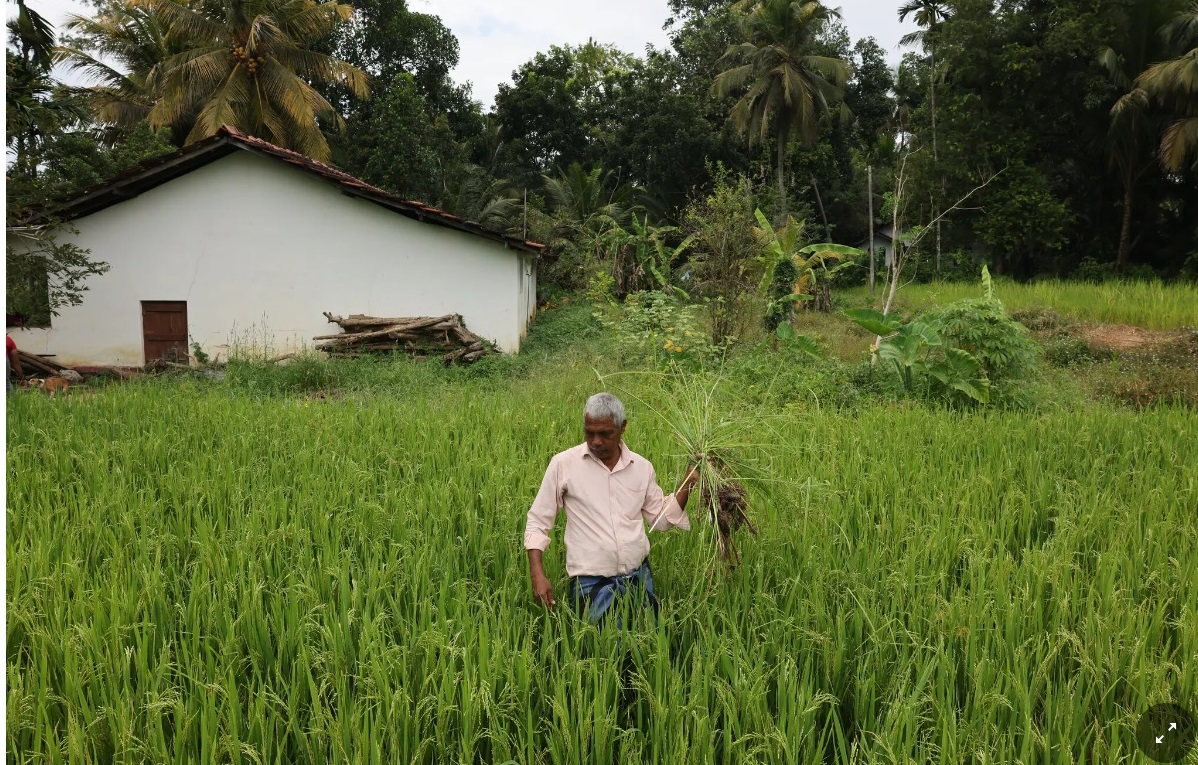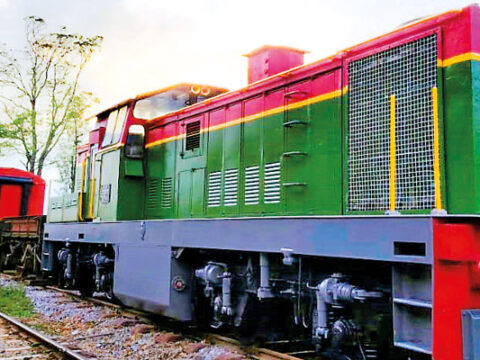COLOMBO: On the surface, calm has returned to Sri Lanka since the South Asian nation plunged into political chaos and virtual bankruptcy last summer. Gone are the fuel lines that snaked for blocks; a seaside expanse that had been the site of a monthslong protest encampment was resplendent over the holidays with Christmas lights and carnival rides.
But underneath, the island’s economy remains on a ventilator, with the government yet to secure a way out of crushing debt. Sri Lankans have become resigned to a sad reality: pared-down meals, shrunken incomes and reduced expectations.
Many young people are desperately trying to find a way out of the country. Those who cannot escape are left to reckon with the likelihood that any economic rebound will be modest at best, all but erasing the earlier promise of mobility in this once middle-income nation.
Perhaps most of all, what has taken the wind out of Sri Lankans is that, even after a popular uprising ousted the strongman president in July, the same political elite still call the shots, with little accountability for the mismanagement and excess that wrecked the country.
Economic data paint a picture of starkly diminished lives. Inflation, which peaked around 90 percent during the worst of the crisis, remains a punishingly high 59 percent. For two in five households, food purchases eat up at least 75 percent of expenditures. Nearly 30 percent of the population is experiencing food insecurity, according to the United Nations.
Some semblance of stability has come not through repairing the economy, but through a series of painful tax increases and subsidy cuts that have further constrained demand. While necessary, the moves are unpopular and offer grist to the political opposition, which raises the risk that this government or the next could pull back on them.
In Sri Lanka’s lush central plains, H.M. Dissanayake, 65, a farmer, and his wife, Malani Mangalika, 64, who runs a corner store, have reduced their consumption of fish and meat from three times a week to once a month.
The couple looked at each other as they tried to remember the last time they had milk.
“Six months ago,” Ms. Mangalika said.
“How long since we had eggs?” Mr. Dissanayake asked.
“Two months,” she said.
Whether Sri Lanka, a country of 22 million, manages to turn things around or instead plunges deeper into economic distress is being closely watched for what officials and diplomats described as a potential domino effect. Dozens of other smaller nations are similarly struggling with unsustainable debt, a hole that has become even harder to climb out of with the economic blow of the pandemic and rising prices related to Russia’s war on Ukraine.
Many of these countries have something in common: They owe a large share of their debt to China.
Sri Lanka defaulted on its debt last spring, and it is now in discussions with the International Monetary Fund over a bailout package that could inject $2.9 billion in much-needed cash into its economy and, more important, restore some confidence with creditors.
As part of the conditions for the I.M.F. package, Sri Lanka is required to get assurances from its bilateral creditors like China on restructuring the terms of its outstanding debt. A majority of Sri Lanka’s roughly $50 billion in debt comes from multilateral lenders and sovereign bonds. China is the largest bilateral donor, with about $7 billion in outstanding debt, according to the Sri Lankan government.
Sri Lanka had hoped to complete the I.M.F. deal by December, but the date has been repeatedly pushed back as the Chinese response has been slowed by last fall’s Communist Party congress and the Covid outbreak that has since swept the country, officials said.
India, another main donor, has given its assurance on debt restructuring. Last week, China sent an initial response to the I.M.F. that Sri Lankan officials said was promising, but it remained unclear whether the offer would satisfy the monetary fund.
Beijing has been moving deliberately, analysts said, in part because it is contending with a mountain of nonperforming loans to other nations, and any concessions it makes to Sri Lanka could set a precedent.
Brad Parks, the executive director of the AidData lab at the College of William and Mary, which has been studying Chinese lending patterns, said Beijing’s playbook had been to emphasize that any talks on loans would remain bilateral and discrete. And while China has been generous in offering repayment extensions or other assistance, it has drawn a line at reducing interest rates or writing off loans.
“They’ve got all these big fires popping up all over the world, and being able to deal with them in kind of a timely way and effective way really does require a coordinated rescheduling approach,” Mr. Parks said. “And so it’s very awkward for China, because they had actually inserted clauses, boilerplate clauses, into their loan contracts that expressly prohibit the borrower from participating in coordinated rescheduling.”
As it waits on China, the Sri Lankan government has been moving on other pieces of the I.M.F.’s conditions to reduce its budget gap — raising taxes, slashing subsidies on essentials like fuel and electricity, and trying to turn around money-losing public enterprises.
Shehan Semasinghe, the state minister for finance, said the government had improved the supply and availability of essential items since the worst months of the crisis. But he acknowledged that Sri Lanka’s foreign reserves remained “negligible” and that the country was still hand-to-mouth.
The government’s difficult effort to control and manage the economic challenges “doesn’t mean we are in the ideal stabilization period,” Mr. Semasinghe said in an interview. “We have used a number of tools which are not the preferred tools to use — we have suppressed demand to a greater extent.”

Farmers like Mr. Dissanayake had never before experienced such austerity, even during Sri Lanka’s three-decade civil war, which ended in 2009.
The part of the economic crisis that they have felt deepest was self-inflicted by the government. Gotabaya Rajapaksa, the president toppled by the protests, banned chemical fertilizers on a whim in the spring of 2021 to push the country into organic farming.
The effect was catastrophic, with the United Nations estimating a 50 percent drop in agricultural production. By the time the government reversed its ban in the face of protests, it had run out of foreign reserves to import fertilizer.
This season, the government provided urea to rice paddy farmers at a discounted rate, though it still cost them more than 20 times the price they once paid, with subsidies now slashed. Mr. Dissanayake and other paddy farmers in their village, as well as government officials, hope that yields of rice, a staple crop, will bounce back to normal.
Vegetable and fruit farmers, however, are at the mercy of the market.
“The government does not provide us with fertilizer, as we are not paddy farmers,” said M.D.S. Wijesinghe, who was once a successful papaya and tomato farmer before the policy disaster left his family surviving off a small coconut grove and the pawning of family jewelry. “We cannot afford to buy fertilizer from the market.”
In Colombo, the one business that is booming involves agencies promising job opportunities abroad — a ticket out of the depressing uncertainty.
Government figures showed that a record 300,000 people left the country for employment abroad in 2022. The desperation is such that a fake advertisement for jobs in Turkey drew about 500 people from different parts of the country into the capital.
“Everybody wants to leave this country,” said Ravi Selliah, the general manager of a recruitment firm. “Even C.E.O.s of companies come and ask for any kind of jobs abroad.”
Kugan Sivanathan, a 21-year-old bank clerk, has been filling out application after application without much luck. When he got his bank job after graduating college, he thought his earnings and his father’s salary as an employee of a cookie factory would give their family of four a comfortable life.
But as prices skyrocketed and the country’s currency plunged, Mr. Sivanathan’s salary was in effect halved — a third of it now goes to his daily bus commute and lunch. His father’s salary was cut by 80 percent as production at the cookie factory plummeted because of shrinking demand.
“At this stage, I thought I could buy a bike,” Mr. Sivanathan said. “I still take the bus.”
© The New York Times




